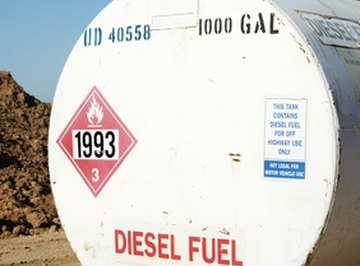
What is Diesel Fuel?
The primary use of diesel fuel is in diesel engines. The invention of the diesel engine is credited to Rudolph Diesel, who filed the first diesel engine patent in 1892. His use of peanut oil (rather than a petroleum product) to fuel an engine--demonstrated at the 1889 exhibition fair in Paris--could be considered the first attempt at a biodiesel fuel. Diesel perceived his engine design as an alternative to other engines of the era that could be used by the everyday man without depending on large industry. Currently, there are two major types of diesel fuel: petroleum based diesel fuel (sometimes called petrodiesel), which is derived from oil; and biodiesel fuel, made using organic materials such as:
- soybeans
- slaughter waste
- corn
Petroleum Diesel Production
The diesel fuel that reaches the end user begins its life as crude oil, the result of large, decaying quantities of biomass (vegetable and animal) combined with pressure and heat. Once this base oil has been harvested, it is transported to a refinery where it undergoes three processes: separation, conversion and purification. The separation process occurs in large distillation towers, where the oil is exposed to extreme heat, causing it to separate into gases and liquids. The products separate based on the temperature differences between the bottom and top of the tower. The products range from propane gas near the top, diesel in the middle and lubricants near the bottom. The next step in diesel production is conversion, which usually involves applying a catalyst to some of the heavier oils from the separation process to create more gasoline, diesel and propane. The final step in the process is purification, and usually involves exposing the products to hydrogen and a catalyst for the removal of sulfur.
Biodiesel Production
The biodiesel production process begins with either plant oils or fats (it can also be animal fats) which are then mixed with alcohol (methanol, typically) and a catalyst. Generally, the mixture is then heated, causing it to react, transforming the fat into glycerin and biodiesel. The excess methanol is removed from both products and often reused. Both the glycerin and biodiesel may undergo purification prior to sale, with the latter being distilled to remove color.
